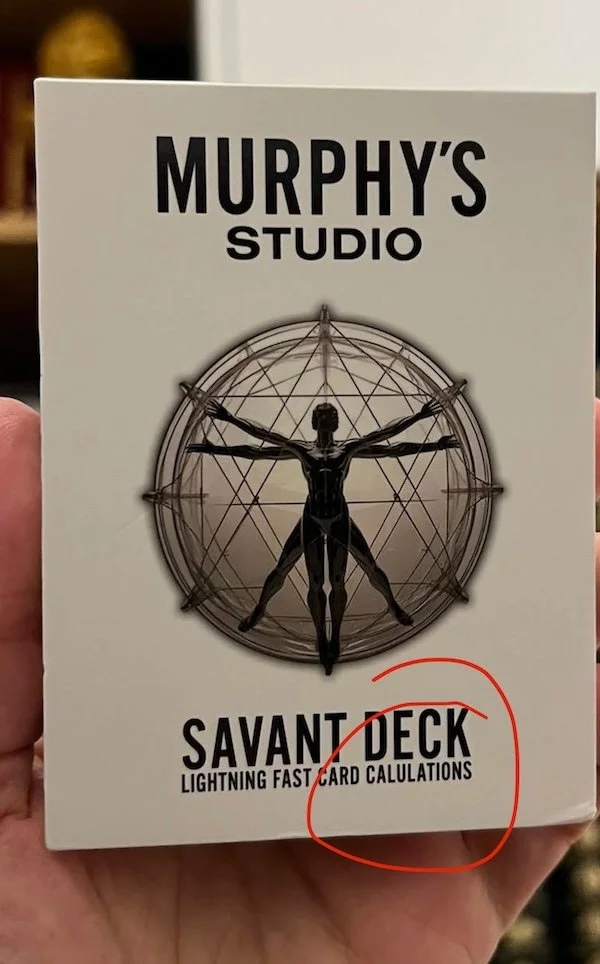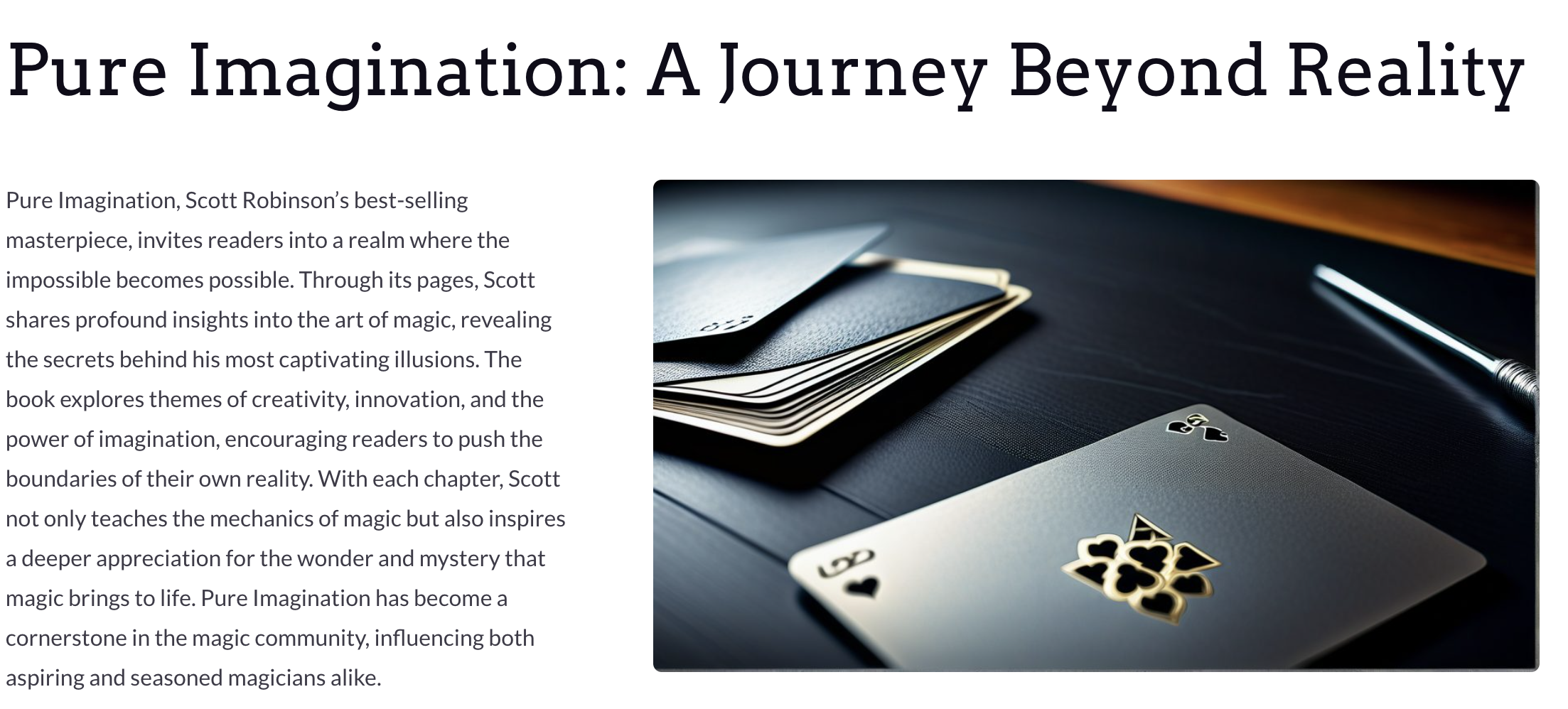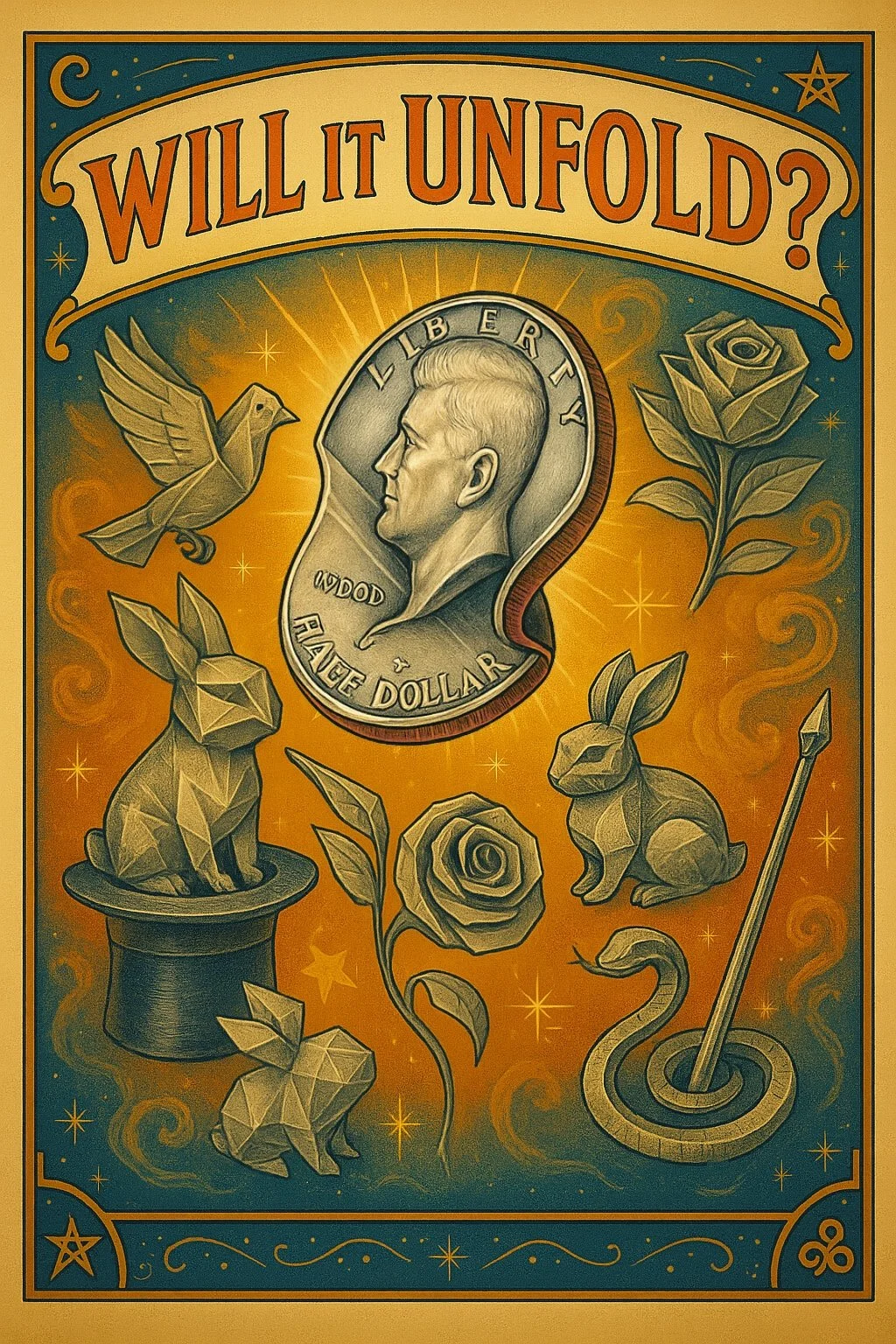Mailbag #142
/I made this post in a magic group on Facebook and I’m not sure why I expected people to engage with it honestly but the comments are just full of magicians coping saying things like “I perform at the annual Engineer banquet every year and they love it” or saying that smart people are usually more fooled by magic. And a lot of them are just saying I need to get better at magic if this is my experience.
But this is something I’ve had trouble reconciling for years. There are clearly a lot of very intelligent and creative people who create and perform magic. But the only people who seem to enjoy watching magic tend to be not very smart. I just can’t imagine someone genuinely intelligent paying $60 to see Penn and Teller like I did the other week.
It’s like being someone who works on “The Kardashians”. I’m sure the people behind that show are incredibly talented people who work in television but ultimately they’re making a show that appeals to the lowest common denominator of society.
And this has kind of been true of magic for years. For a long time it was just considered a form of “juggling” and was a street performance. Kinda similar to those silver robot guys. Robert-Houdin brought it to the stage but I’d argue the target audience never really changed.
What do you think? Is there a way to make magic more appealing to intelligent people or are we playing a losing game and doomed to only perform for people who would eat crayons. —AO
In my experience, I haven’t noticed a strong correlation between intelligence and people’s enjoyment of magic.
That said, I don’t perform for random crowds. I perform for people in my social circle. And most of the people I choose to spend time with are smart, funny, interesting people. And I’ve naturally evolved material that appeals to them.
Now, if you’re asking whether a generic trick off Ellusionist is more likely to appeal to a dumb person? Yeah, probably.
There are a couple reasons for that:
Most magicians are bad. Dumb people are more easily entertained by bad art.
Magic can make people feel stupid. Dumb people are used to feeling stupid (some would say it’s the defining trait of being dumb). Smart people are uncomfortable feeling that way.
But I’ve never had trouble getting smart people to enjoy magic—so long as I’m doing something genuinely fun, rooted in a good premise, and not giving off a “look how clever I am” vibe.
Look to your own email for proof that it can be done. I can’t speak to what Penn & Teller are doing in Vegas these days, but back in the ’80s, they were darlings of the art-house scene in New York—getting 10,000-word profiles in The New Yorker. Now, sure, after eleven seasons of a TV show designed for mass appeal and a long-running Vegas residency aimed at tourists and families, the current show may not feel especially cerebral. But what were you expecting? If you're looking for entertainment aimed at intelligent people, don’t go to a city erected atop a foundation of bad math and human stupidity.
Do you know any worthwhile facebook magic groups? Anything that replaces the Cafe since that’s a non-factor these days?—SD
I don’t have a Facebook account myself, so I’ve only seen the magic groups there by browsing through friends’ accounts.
Personally, I haven’t found any that seem particularly helpful. The most useful ones tend to be focused on a specific product or app. But Facebook isn’t built to organize or preserve information, so even when there is a valuable post, it usually gets buried under years of low-effort noise.
I’m sure the DFB group has some great posts. But every time I visit, I’m drowning in things like: “Look, it’s Superman holding a Coca-Cola can! This would be a great DFB reveal!” Would it? Really?
The general-purpose magic groups are usually even worse. It’s hard for any group to be worthwhile when its primary goal is just size. A Facebook group with a dozen smart, handpicked members could be great. But once you’ve got thousands of people, it devolves fast.
At that point, the posts are mostly:
People with something to sell, or
Enthusiastic beginners with special needs asking how to get their head unstuck from a Square Circle.
These groups often pretend to be “magicians only,” but the entry requirements usually amount to a question like:
On their heads, magicians traditionally wore a Top ___?
A) Hat
B) Cat
C) Fat
D) Bat
So yeah, maybe there are some obscure Facebook groups out there trading genuinely valuable ideas. But if they exist, I don’t know about them, and they probably want nothing to do with you.






















